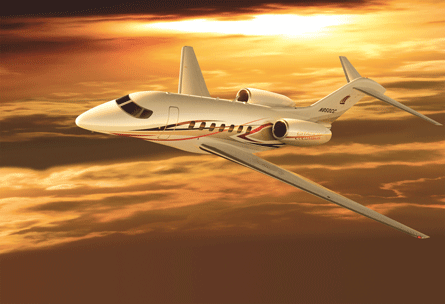Invoking the name of explorer Christopher Columbus, Cessna has set sail for uncharted waters by launching its biggest and most expensive business jet, the large-cabin, intercontinental-range Model 850 Citation Columbus.
The $27 million Columbus is a direct competitor to the Bombardier Challenger 605 and Dassault Falcon 2000EX large-cabin jets, and sees Cessna leapfrog the Challenger 300 and other super mid-size jets.
Cessna already has letters of intent for more than 70 aircraft, which the Wichita, Kansas-based manufacturer expects to convert into firm orders by year-end, says chief executive Jack Pelton. First flight is scheduled for 2011, certification for 2012 and service entry for 2014.
The Columbus is the first Cessna designed to carry passengers overseas, with planned missions including Munich-New York, London-Dubai, Singapore-Sydney and Sao Paulo-Miami. The large-cabin jet is designed to give operators of the 5,100 Citations now in service an aircraft to move up to.
|
|---|
The columbus is the first Cessna designed to take passengers overseas |
The Columbus is not fly-by-wire or composite, and the design theme is "simplicity coupled with operational availability", says senior vice-president engineering David Brant. As in previous "sensible Citations", the airframe is conventional aluminium. This contrasts with the approach pioneered by Hawker Beechraft with its composite-fuselage business jets and adopted by Bombardier for its all-composite Learjet 85.
But the Columbus is a departure for Cessna in the way it develops and builds aircraft. Wichita-based Spirit AeroSystems has been selected to produce the fuselage and empennage - the latter at its plant in Prestwick, Scotland. A wing supplier has been chosen but not named, says Pelton. System suppliers are being selected.
Cessna will be responsible for the overall design, integration, test and certification of the aircraft. The suppliers will not be risk-sharing partners because they are in other manufacturers' programmes. "Cessna will pay all the development costs," says Pelton. These will total $775 million.
The large-cabin Columbus is substantially bigger than the mid-size Citation Sovereign and high-speed Citation X, with a significant price jump, but later derivatives may fill the gap. "This is the first in a family, and the sweet spot for the initial launch product," says Pelton. "We believe there are other variants that will make sense over time."
The aircraft is targeted directly at the Bombardier and Dassault large-cabin market leaders. Design range is 7,400km (4,000nm) at Mach 0.8 with eight passengers, and maximum cruise speed is M0.85. This compares with 7,480km at M0.74 with five passengers for the Challenger 605 and 7,030km at M0.8 for the Falcon 2000EX.
Equally important is cabin size. The Columbus cabin is 11.1m (36.3ft) long - the longest in its class by almost 0.6m, says Cessna. At 2.09m, the cabin is narrower than its rivals', but by locating the floor lower in the fuselage, Cessna has matched their stand-up headroom, with an aisle height of 1.85m.
External frames allow the lower floor to be wider, increasing seated space, says senior vice-president marketing Roger Whyte. To reduce occupant fatigue, the Columbus will have a cabin altitude of 6,700ft (2,040m) at the aircraft's cruise ceiling of 45,000ft.
Whyte says the Columbus is the result of six years of study at Cessna, which included presenting multiple aircraft configurations and cabin mock-ups to prospective customers. Brant says Cessna has been working with suppliers in a joint concept definition phase that began in late 2007 and will continue through the first quarter of this year.
Pratt & Whitney Canada has been selected to provide its new PW810 engine, with a thrust of 8,830lb (39.3kN). Rockwell Collins will provide its Pro Line Fusion integrated avionics, including four 15in (380mm) liquid-crystal displays with synthetic vision. A head-up display with enhanced vision will be an option.
Source: Flight International

















